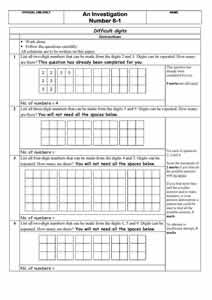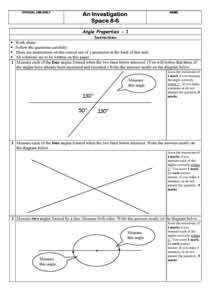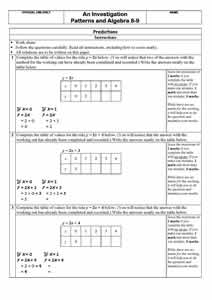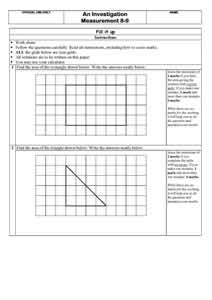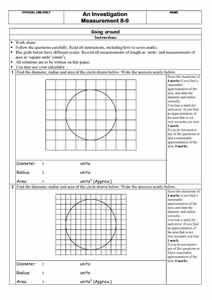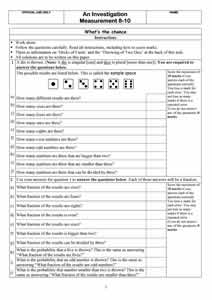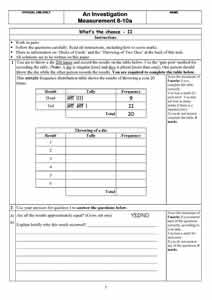INVESTIGATIONS
The following material was produced by me when I was teaching. To the best of my knowledge all materials are original.
All files are in the PDF format
They are free to use, although I reserve full rights
| These sheets were written with the intention that they would create self learning assessments. They are all developmental in their content and have detailed criteria for each step. The topics were linked to the NSW Satge 4 and Stage 5 Mathematics Syllabus. |
|
Link |
Topic |
Difficult digits |
|
Angle Properties - 1 Space 8-6 Areas covered: Measuring angles. Use of a protractor Discover the properties of vertically opposite angles and straight angles (and possible awareness of an angle of revolution). |
|
Predictions Patterns and Algebra 8-9 Areas covered: Substitution into a linear formula. Finding the common difference in linear number pattern. Using the common difference in linear number pattern to find the formula that generated the number pattern. i.e. Find the linear equation in the form y = mx + b. |
|
Fill it up Measurement 8-9 Areas covered: Pythagoras' Rule. Finding and/or estimating the area of shapes by counting squares. Verifying that Pythagoras' Rule works for all regular shapes. |
|
Going around Measurement 8-9 Areas covered: Finding and/or estimating the area of circles by counting squares. List diameter, radius and approximate area using units and units2. Use of a smaller grid to find a more accurate result. Use results to estimate π (pi) . |
|
What’s the chance Measurement 8-10 Areas covered: Probability Discovering theoretical probabilty using dice and a standard deck of playing cards. Includes independent events (dice) and dependent events (playing cards). The sample space of both dice and playing cards are explained and illustrated. |
|
What’s the chance - II |
|
